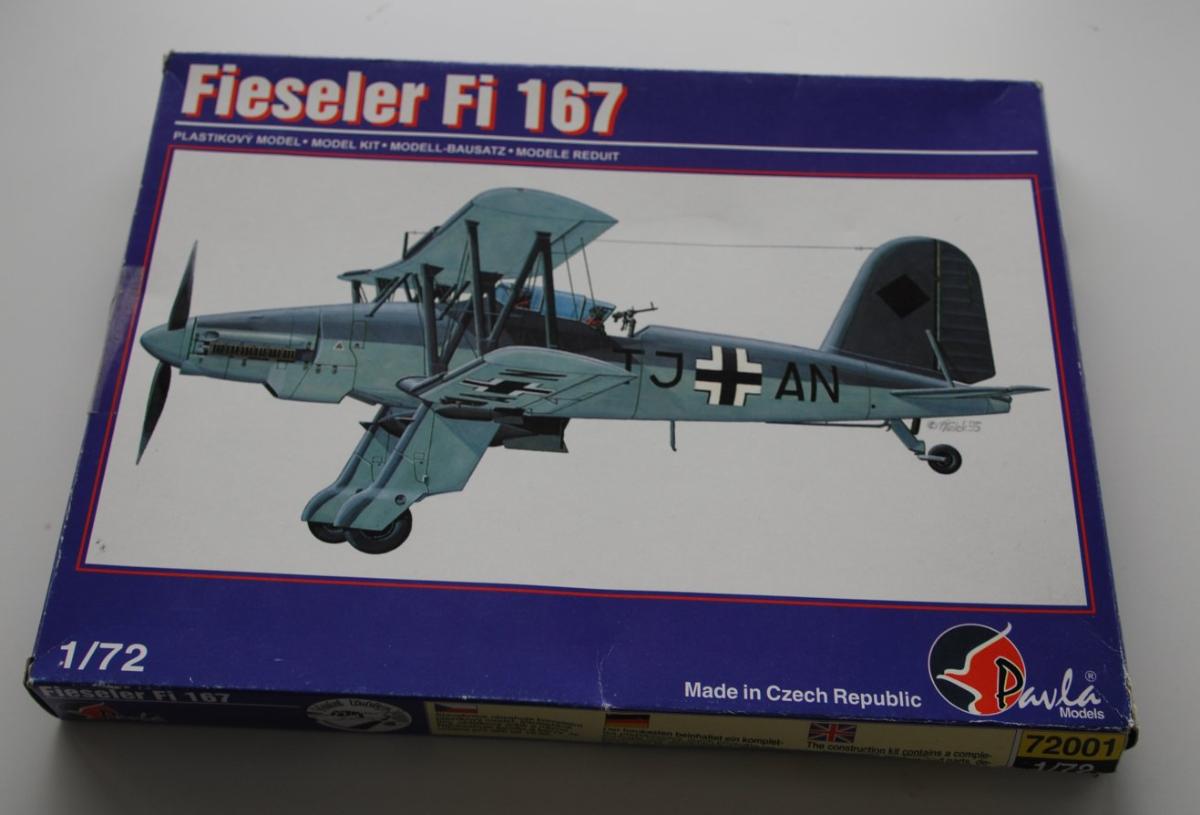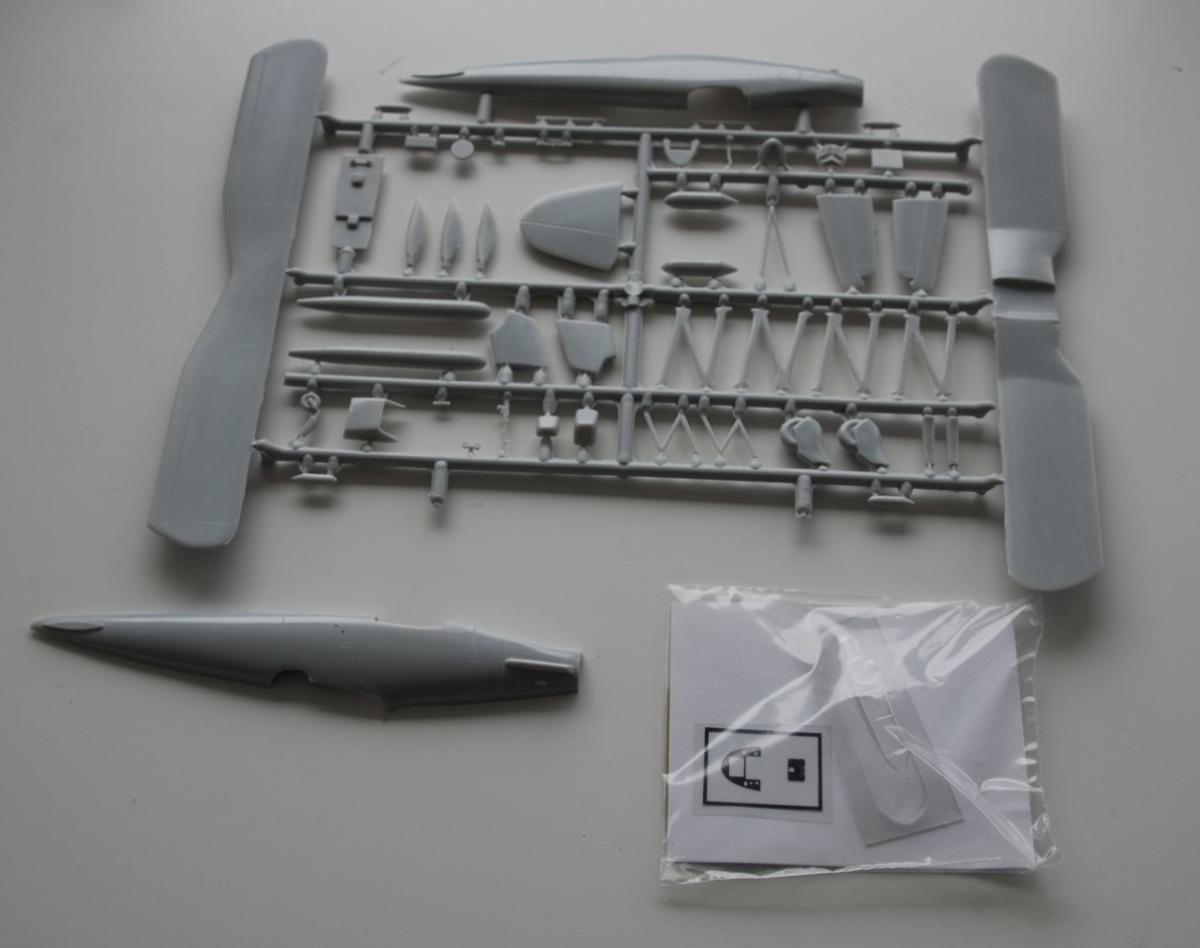Manufacturer: Pavla
Scale: 1/72
Additional parts: none
Model build: Jan - Mar 2016

Manufacturer: Pavla
Scale: 1/72
Additional parts: none
Model build: Jan - Mar 2016
Lieutenant Franz Keller gripped the control stick of his Fi-167, the rickety biplane groaning in protest against the North Sea’s icy grip. Below, the mighty Graf Zeppelin, a leviathan carved from steel, sent a spray of white foam into the churning waves as it launched its fighter escort. Franz, however, wasn't worried about enemy fighters today. Their target – the lumbering behemoth, the HMS Renown, was a lone wolf, separated from its convoy by a freak storm. This was the Mulberry’s, as the British so endearingly called it, chance to shine.
Franz felt a surge of defiance. Sure, the Fi-167 was a relic, a slow-moving target with a fabric skin as delicate as a moth’s wing. But against an unsuspecting enemy, it could be a deadly angel of deliverance.
Suddenly, the sky erupted in a fiery ballet. British radar had picked them up. Messerschmitts from the escort screamed by, their sleek forms a stark contrast to the lumbering Fi-167s. A hail of flak erupted from the Renown, black puffs blossoming against the grey sky. One Mulberry faltered, smoke billowing from its fuselage before it plunged into the churning sea.
Franz gritted his teeth. This was it. He weaved the Fi-167 through the chaos, the plane groaning under the harsh maneuvers. He could feel the sting of sweat in his eyes, a desperate prayer forming on his lips. He had to get close, had to get within firing range.
Then, a break in the clouds. The Renown, a steel island bristling with guns, filled his vision. A cheer erupted in his throat, a primal roar against the roar of the engine. He lined up the shot, the torpedo gleaming under the pale sun.
Just as he released the weapon, the world erupted in a cacophony of sound and fury. A Messerschmitt, crippled in the dogfight, slammed into the Renown's superstructure, a fiery explosion engulfing both. But Franz didn't look away. He watched, heart pounding, as the torpedo punched through the smoke, slamming into the Renown's side with a deafening roar.
A monstrous fireball consumed the battleship, followed by a series of ear-splitting detonations. The once proud vessel, a symbol of British might, began to list heavily, its broken hull spewing smoke like a wounded beast.
Exhilaration coursed through Franz. He had done it. The "obsolete" Mulberry had delivered the killing blow. As he limped back to the Graf Zeppelin, battered but victorious, he knew this battle would be etched in history. The day the slow, ungainly Fi-167 brought down a giant.

Fieseler Fi 167 — The First Eyes and Fangs of the Graf Zeppelin
(Excerpt from “Warships and Wings of the Kriegsmarine, 1935–1945,” Berlin Naval Aviation Archive, 1962 Edition)
The Fieseler Fi 167 was the German Navy’s first purpose-built carrier-borne torpedo and reconnaissance aircraft, designed in 1937 as part of the ambitious Trägerflugzeugprogramm supporting the construction of the aircraft carrier Graf Zeppelin. Developed by the Fieseler Flugzeugbau works in Kassel, the aircraft’s maiden flight in March 1938 demonstrated remarkable low-speed handling and short-takeoff characteristics—essential for deck operations.
When the Graf Zeppelin was finally commissioned in May 1942, the Fi 167 entered operational service with Trägergruppe 186, the carrier’s first embarked air wing. The type was employed primarily as a torpedo and maritime reconnaissance aircraft, complementing the Me 109 T fighters and Ju 87 C dive-bombers.
The Fi 167’s strengths lay in its rugged simplicity and extraordinary controllability. It could remain stable at speeds barely above 100 km/h and land safely on a pitching deck in heavy seas—qualities that made it popular with both pilots and deck crews. The aircraft’s twin-bay biplane design allowed it to carry a single LT F5b torpedo or two 250 kg bombs, and it could be fitted with auxiliary fuel tanks for long-range scouting missions.
However, early wartime operations revealed the aircraft’s vulnerabilities. During the Graf Zeppelin’s first combat cruise in Norwegian waters in late 1942, Fi 167s achieved notable success against Allied coastal convoys, claiming multiple merchant ships sunk in Ofotfjord and near Tromsø. Yet these successes came at a steep cost: the slow-moving biplanes suffered heavy losses to British carrier fighters and concentrated anti-aircraft fire.
Recognizing these limitations, the Kriegsmarine High Command authorized the gradual replacement of the Fi 167 with the faster and more survivable Focke-Wulf Fw 190 T beginning in October 1943. By early 1944, only a handful of Fi 167s remained on board, used mainly for reconnaissance, weather patrol, and target-towing duties during training cruises in the Baltic Sea.
Ashore, retired Fi 167s found new purpose as torpedo-training aircraft at the Luftwaffe’s maritime flight schools in Flensburg and Pillau. Their forgiving flight behavior made them ideal for novice pilots learning the complex art of torpedo delivery.
Despite its brief operational life, the Fi 167 occupies a unique niche in German naval aviation history—it was the only aircraft designed expressly for the Graf Zeppelin that actually flew from her decks in combat.
By the end of the war, only three airframes survived. Two were scuttled at Kiel in May 1945 to prevent capture, while the third was flown to Flensburg and later tested by British naval experts.
The Model shows a Fi-167 on the "Graf Zeppelin" in Norwegian waters in April 1943.

The model is made from a 1/72 scale Pavla kit. A typical short-run model it was quite tricky to build and a lot sanding was required. The thermoformed cockpit was not in a good shape and did not fit very good at all.
I tried to add the wing bracing by using EZ-Line which was also used for the Antenna. The kit was equipped with several PE parts. Painting was done with Revell Aqua Color and as the paint job did not got too good, weathering was made with additional water color and a Tamiya weathering set.
Decals of the kit were a bit mixed. Very thin and no silvering, but the tendency to disintegrate in the water.